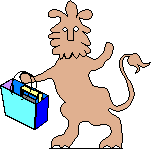 Rare Book School
Rare Book School
Johanna Drucker, Riva Castleman, 2. Journals
JAB: The Journal of Artists Books, published by Brad Freeman, founded in 1994, the only publication devoted exclusively to criticism in the field of artists' books. Contains artists' pages, interviews, critical and historical articles, and reviews of books.
Umbrella, edited and published by Judith Hoffberg, a newsletter with remarkable longevity and stamina, a useful way to map artists' book publications and their appearance in the field.
Other journals that have or had regular articles on artists' books: Fine Print (from the 1970s), Print Collector's Newsletter – now On Paper, Ampersand, Art Monthly, and Northwest Review.
3. Other useful works in the fieldGermano Celant, Book as Artwork 1960/72, exhibition catalogue (London: Nigel Greenwood, 1972). If you can get hold of a copy of this, do so. It is invaluable and one of the smartest things written on conceptual art and books.
Susan Compton, Susan Compton, Cathy Courtney, Facing the Page: British Artists' Books: A Survey 1983-1993 (London: Estampe, 1993).
Cathy Courtney, Brad Freeman, Offset, exhibition catalogue (NY: 1992).
Renée and Judd Hubert, Renée Riese Hubert, Julie Melby, editor, Anne Moeglin-Delcroix, L'Esthetique du livre d'artiste (Paris: Jean-Michel Place, 1997); a sophisticated discussion of conceptual art and the books produced within its purview; limited in scope but with considerable intellectual depth, provides some of the most thoughtful discussions and arguments about books within the field to date. Expensive, and well-illustrated, and not likely to ever appear in translation.
Robert Morgan, Commentaries on the New Media Arts: Fluxus and Conceptual Art, Artists' Books, Correspondence Art, Audio and Video Art (Pasadena: Umbrella Associates, 1992).
W. J. (Walter John) Strachan, The Artist and the Book in France (NY: Wittenborn, 1969); though focused primarily on the livre d'artiste and its fine press and printmaking traditions, this work is a useful introduction to the emergence of that uniquely c20 form.
Martha Wilson, RBS Home